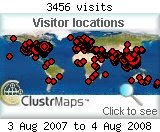Here's a very good article about Mindanao. What he wrote isn't a mystery but perhaps people who are supposed to make the difference should start doing something about it.
The Trouble With Mindanao
By Fernando Fajardo
Cebu Daily News
Last updated 01:31pm (Mla time) 08/17/2007
Marcos reorganized the National Economic Council (NEC) to become the super economic planning body after abolishing, or relegating to supporting role, the other agencies that competed with it in coming up with economic plans and giving advice to the President on development matters.
Changing its named to National Economic and Development Authority (NEDA), Marcos mandated the revitalized government planning office to include the regions in its planning work to lessen the degree of regional imbalance in the country’s development. This required its presence in the different regions of the country. The new opening gave me the chance to land a new job at NEDA Region X based in Cagayan de Oro City. That came in 1974 and there began my education on Mindanao.
Although based in Cagayan de Oro, I had the chance to see not only the ten provinces that comprised Region X or Northern Mindanao at that time, but also the rest of the island during the course of my work, which sometimes required me to go to Davao, Cotabato, and Zamboanga for conferences, including a side trip to Basilan to observe its plantation economy.
At that time I was not worried about the secessionist movement in Mindanao, which I thought was very much under control by Marcos with martial law. I saw no problem in Cagayan de Oro and Northern Mindanao in general. Even Lanao del Sur looked serene to me, especially that then-Mayor Omar Dianalan of Marawi City was very supportive of our work at NEDA.
While in Cagayan de Oro, I saw for myself the start and completion of many programs and projects that made Cagayan de Oro into one of the most progressive cities in Mindanao today. One of these was the decision of Marcos of develop a 3,000-hectare industrial-estate nearby, in Tagoloan and Villanueva, Misamis Oriental, to convince Kawasaki of Japan to put up its new iron sintering plant in the country.
Another was the inclusion of the city in the Regional Cities Development Project, which allowed it to improve its road network and other basic facilities required of a regional capital. The newly organized water district was amply funded, a new port was developed, and the airport was improved. Meanwhile, the concreting of Butuan-Cagayan de Oro-Iligan Road was started, which included a four-lane highway within the city proper. This was followed by the improvement of the Sayre Highway to Bukidnon. In rural electrification, Misamis Oriental became the pilot project using hydropower from Maria Cristina Falls in Iligan.
One day in 1975, I was told to go to Cotabato City to help set up the new NEDA regional office there after the creation of the Central Mindanao Region or Region XII, the first of the five new regions added to the original eleven, or twelve, if Metro Manila or NCR is included. My temporary posting in Cotabato City came with a chance for me to become chief of either of the two technical divisions in the new office. Did I take the chance? No, sir, because after few weeks of familiarizing myself with the city and the new region, I immediately sensed that something was wrong there.
At that time, no day would pass without some shootings or bombings somewhere in the city or nearby towns. From Cotabato City, one had to be careful in going to Davao City or General Santos City or to any of the provinces in Central Mindanao because of the danger of being ambushed along the way. And going home to Cagayan de Oro via Bukidnon was out of the question. I figured that the only safe way out of Cotabato City was by plane because of its heavily guarded airport, but in case of a real trouble, how many planes would be there to take us out? After a few months, I decided to return to Cagayan de Oro without the promotion and stayed there until Edsa I happened.
After Edsa I, I asked to be transferred here in Cebu, where I also got promoted two years later. Finally, after 20 years in 1994, I left NEDA. Even while here, though, my assignments as lecturer on planning and development allowed me to visit the major cities in Mindanao. As an outsider this time, I could now easily sense the discrepancy in the island’s growth and development: fast in most of the Christian areas and slow or almost nil in Muslim areas.
That is the trouble with Mindanao. I would not say that the problem is mainly economic. Surely, culture and religion have much to do with the underdevelopment of the Muslim areas. Different cultures and religions motivate people to behave in different ways. We know that, but if so, what have we done about it? Did we even teach ourselves to learn the language of our Muslim brothers in Mindanao to better understand and interact with them? How is life in a Muslim home or community, do we know? What about our western-style government? If it suits us, Christians, do our Muslim brothers and sisters feel comfortable with it?
If until today there is mistrust on the part of the Muslims against Christians, I blame that not so much on their great feeling of deprivation compared to us. It could be an aggravating factor, but the main reason I believe is our lack of understanding of their culture and religion and our inability to integrate with them or they with us. Until we change that, no amount of brave posturing by Malacañang, whenever our men in uniform is challenged in Mindanao, will bring us any closer to end the trouble there.
Cebu Daily News
Last updated 01:31pm (Mla time) 08/17/2007
Marcos reorganized the National Economic Council (NEC) to become the super economic planning body after abolishing, or relegating to supporting role, the other agencies that competed with it in coming up with economic plans and giving advice to the President on development matters.
Changing its named to National Economic and Development Authority (NEDA), Marcos mandated the revitalized government planning office to include the regions in its planning work to lessen the degree of regional imbalance in the country’s development. This required its presence in the different regions of the country. The new opening gave me the chance to land a new job at NEDA Region X based in Cagayan de Oro City. That came in 1974 and there began my education on Mindanao.
Although based in Cagayan de Oro, I had the chance to see not only the ten provinces that comprised Region X or Northern Mindanao at that time, but also the rest of the island during the course of my work, which sometimes required me to go to Davao, Cotabato, and Zamboanga for conferences, including a side trip to Basilan to observe its plantation economy.
At that time I was not worried about the secessionist movement in Mindanao, which I thought was very much under control by Marcos with martial law. I saw no problem in Cagayan de Oro and Northern Mindanao in general. Even Lanao del Sur looked serene to me, especially that then-Mayor Omar Dianalan of Marawi City was very supportive of our work at NEDA.
While in Cagayan de Oro, I saw for myself the start and completion of many programs and projects that made Cagayan de Oro into one of the most progressive cities in Mindanao today. One of these was the decision of Marcos of develop a 3,000-hectare industrial-estate nearby, in Tagoloan and Villanueva, Misamis Oriental, to convince Kawasaki of Japan to put up its new iron sintering plant in the country.
Another was the inclusion of the city in the Regional Cities Development Project, which allowed it to improve its road network and other basic facilities required of a regional capital. The newly organized water district was amply funded, a new port was developed, and the airport was improved. Meanwhile, the concreting of Butuan-Cagayan de Oro-Iligan Road was started, which included a four-lane highway within the city proper. This was followed by the improvement of the Sayre Highway to Bukidnon. In rural electrification, Misamis Oriental became the pilot project using hydropower from Maria Cristina Falls in Iligan.
One day in 1975, I was told to go to Cotabato City to help set up the new NEDA regional office there after the creation of the Central Mindanao Region or Region XII, the first of the five new regions added to the original eleven, or twelve, if Metro Manila or NCR is included. My temporary posting in Cotabato City came with a chance for me to become chief of either of the two technical divisions in the new office. Did I take the chance? No, sir, because after few weeks of familiarizing myself with the city and the new region, I immediately sensed that something was wrong there.
At that time, no day would pass without some shootings or bombings somewhere in the city or nearby towns. From Cotabato City, one had to be careful in going to Davao City or General Santos City or to any of the provinces in Central Mindanao because of the danger of being ambushed along the way. And going home to Cagayan de Oro via Bukidnon was out of the question. I figured that the only safe way out of Cotabato City was by plane because of its heavily guarded airport, but in case of a real trouble, how many planes would be there to take us out? After a few months, I decided to return to Cagayan de Oro without the promotion and stayed there until Edsa I happened.
After Edsa I, I asked to be transferred here in Cebu, where I also got promoted two years later. Finally, after 20 years in 1994, I left NEDA. Even while here, though, my assignments as lecturer on planning and development allowed me to visit the major cities in Mindanao. As an outsider this time, I could now easily sense the discrepancy in the island’s growth and development: fast in most of the Christian areas and slow or almost nil in Muslim areas.
That is the trouble with Mindanao. I would not say that the problem is mainly economic. Surely, culture and religion have much to do with the underdevelopment of the Muslim areas. Different cultures and religions motivate people to behave in different ways. We know that, but if so, what have we done about it? Did we even teach ourselves to learn the language of our Muslim brothers in Mindanao to better understand and interact with them? How is life in a Muslim home or community, do we know? What about our western-style government? If it suits us, Christians, do our Muslim brothers and sisters feel comfortable with it?
If until today there is mistrust on the part of the Muslims against Christians, I blame that not so much on their great feeling of deprivation compared to us. It could be an aggravating factor, but the main reason I believe is our lack of understanding of their culture and religion and our inability to integrate with them or they with us. Until we change that, no amount of brave posturing by Malacañang, whenever our men in uniform is challenged in Mindanao, will bring us any closer to end the trouble there.













0 comments:
Post a Comment